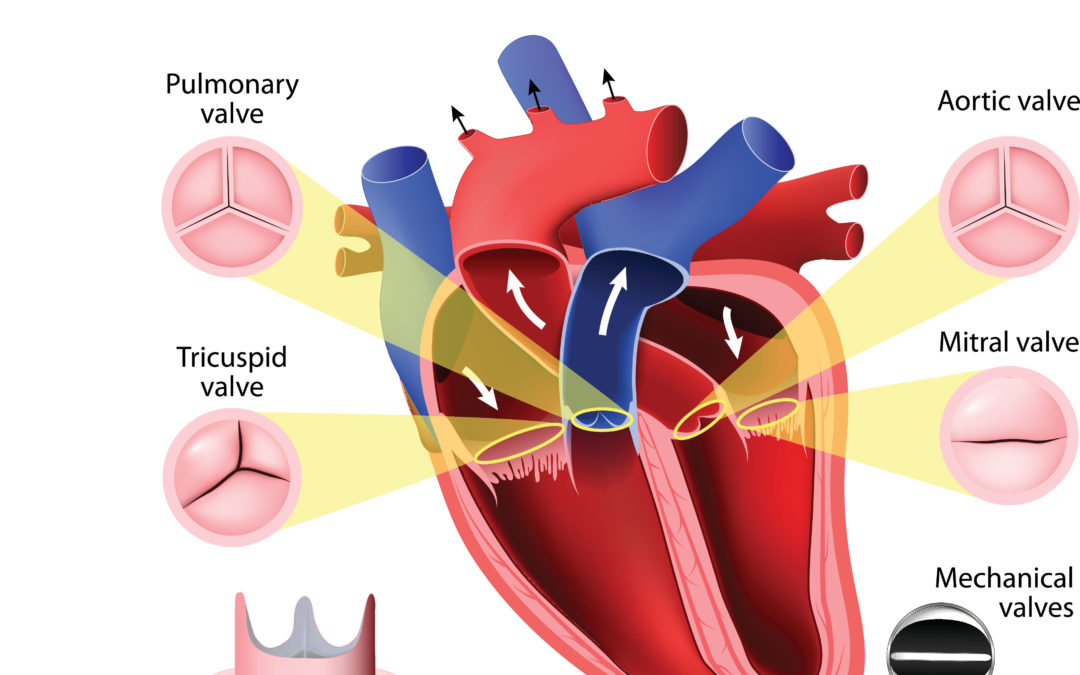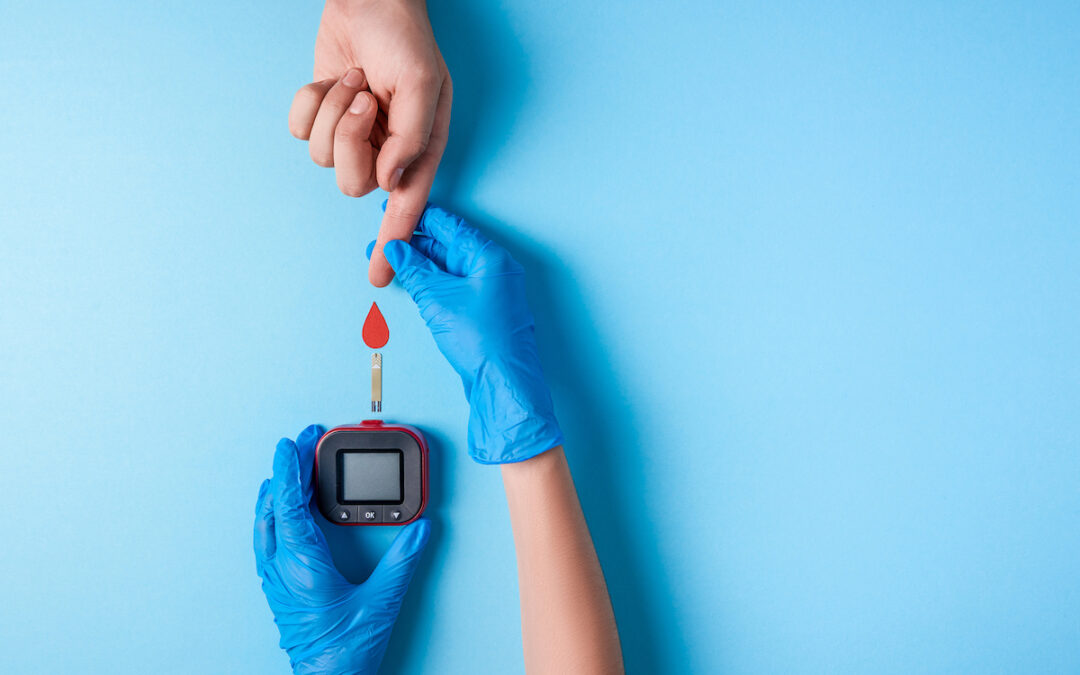
by DrCiuffo | Jan 4, 2023 | Blog, Anatomy
The heart is the symbol of love, affection, and intimacy for many. However, not everyone knows much about the actual the heart’s structure. What is the difference between a valve and a chamber? What are the major arteries and veins? If you don’t know the answers to these questions, then this is blog is going to answer all of your questions about the heart’s structure. Heart Chambers The heart’s structure is divided into four main parts called chambers. These four chambers are divided into two groups: The Atriums are located within the upper part of the heart. There is one is on the right side, and the other is on the left side. Oxygenated blood is pumped through the left atrium into the body. Once the blood has deposited oxygen to other parts of the body, it is pumped into the right atrium of the heart, where it is recycled. The Ventricles are on the bottom of the heart and are often considered its main chambers, which collect blood from the left atrium and expel it toward the lungs. Heart Valves Blood flows through the heart’s structure in one direction from one chamber to the next through a series of valves. These valves consist of tissue that is about as thick as a piece of paper. Like the heart chambers, there are four heart valves between each of the chambers. The tricuspid valve is the right atrioventricular valve. The bicuspid or mitral valve is the left atrioventricular valve is. The pulmonary semilunar valve is between the right ventricle and the pulmonary trunk. The aortic semilunar valve is between the... by DrCiuffo | Dec 30, 2022 | Advanced Heart Surgery, Aortic Valve Replacement, Blog, Dr. Giovanni B Ciuffo, Heart Health
A normal functioning aortic valve has three leaflets, usually referred to as cusps, and is positioned at the end of the left ventricle. This valve is the main pump that delivers oxygenated blood to the entire body. An aortic valve replacement is required if someone suffers from Aortic Valve Stenosis or Aortic Valve Insufficiency. These two issues can cause a significant number of problems and can be life-threatening. Understanding the components that are involved in an aortic valve replacement is essential, especially if you are considering one. Dr. Ciuffo takes the time to consider your specific situation before moving forward on a treatment plan. If you are looking for this information to guide you through decisions regarding your healthy heart, this is a great place to start. Today we take a deep dive into aortic valve replacement, so you can have the knowledge you need. When to Consider Aortic Valve Replacement As already mentioned, there are two reasons why someone would need an aortic valve replacement. When suffering from aortic stenosis, the valve is narrow, causing it to be more challenging for the blood to go through. Basically, the muscle in the heart begins to thicken, causing a hissing sound, which is oftentimes confused with a murmur. With aortic valve insufficiency, the valve tends to “leak” when it is closed. This makes the heart work twice as hard to make the blood flow correctly and in the right direction. To repair this, doctors have created a minimally invasive technique that is much safer and easier on patients. What to Consider for an Aortic Valve Replacement Since the breastbone is... by DrCiuffo | Dec 15, 2022 | Blog
When you are enjoying an athletic activity, you will notice your heart beats faster than when you are just resting and reading a book. When you exercise, your body may need three to four times your average cardiac output. This happens because your muscles need more oxygen when you exert energy. So what causes pulse deficit, and what is it? Pulse deficit is when one finds a difference in count between heartbeat and peripheral pulse. So what causes pulse deficit in people? In this blog, we will address what pulse deficit is, its causes, how to take a pulse, symptoms, and treatments. What is Pulse Deficit? Pulse deficit occurs when the heart is contracting, and the pulse is not reaching the periphery. Pulse deficit can be dangerous if not treated properly, this is especially true if heart conditions run in your family. No need to worry because once you know the signs and what causes pulse deficit, you will know to reach out to a doctor to get help for yourself or a loved one. Taking a Pulse If you are wondering if your family member has a pulse deficit, it is important to know how to properly take a pulse. You can begin taking a pulse by putting two fingers on a person’s neck or wrist. When Measuring Pulse in Someone’s Wrist: Have the person’s arm held out straight, with the palm of their hand facing upwards Place your first finger and middle fingers on their wrist, near the base of their thumb Pull out a clock that shows your the seconds clearly, count how many beats you... 
by DrCiuffo | Nov 30, 2022 | Blog
Signs You Could Be Diabetic Diabetes is one of the most common chronic illnesses in the US today. It can lead to heart disease, chronic pain and numbness in the extremities, loss of eyesight, and even amputation of toes and feet if not kept under careful control. Early symptoms are often overlooked. Knowing the signs may help you catch diabetes early and prevent long-term cardiovascular damage. Type I Diabetes Type I diabetes usually comes on before the patient is an adult. In Type I diabetes, the patient’s pancreas simply stops producing insulin. It can result from heredity, infection, or pancreas injury. Typically symptoms are far more severe and develop more quickly than in patients with Type II diabetes. Symptoms when diabetic may include rapid weight loss, lethargy, dehydration, and a significant increase in urination. Type II Diabetes Type II diabetes is far more common than Type I in adults. It may be caused by heredity, the strain excess weight puts on the body or poor eating habits. Type II diabetes symptoms may come on more slowly and be less noticeable at first than the symptoms of Type I. They may include: Frequent urination Chronic, insatiable hunger that returns even after eating Insatiable thirst Dry, itchy, flaky skin due to dehydration Blurring vision Sudden weight loss unrelated to diet or exercise Unexplained fatigue and lethargy Slow healing of cuts or bruises Gum disease Factors that Contribute to Diabetes Certain factors can influence your chances of becoming diabetic. While Type II diabetes is often connected with being overweight, genetics also play a large part. If a parent or sibling is diabetic,... by DrCiuffo | Nov 15, 2022 | Blog, Bloodless Heart Surgery, Dr. Giovanni B Ciuffo, Heart Health, Heart Surgery
10 Tips For Inoperable Heart Disease A diagnosis of inoperable heart disease can be discouraging. A heart condition may be difficult to live with. Minimally invasive bloodless heart surgery may offer options that may not be possible with traditional methods. The treatment options available depend upon several conditions, including your physical health and the scope of experience of the doctors dealing with your case. Dr. Ciuffo is dedicated to finding the solutions that work best for everyone’s individual health journey. By helping you understand inoperable heart disease, you can move forward toward helpful changes. The first step is understanding that your journey will look different from other patients. Get started today to see how we can help you! Inoperable Heart Disease Each patient’s case is decided individually. There are steps you’ll need to take when facing a diagnosis of inoperable heart disease. It’s important not to panic or lose hope. Even if your case isn’t a good candidate for surgical options, many treatments can extend and improve the quality of your life. Ask questions. Request that the medical doctor in charge of your case and your surgeon explain exactly why your case is considered “inoperable.” Be sure to write down the details of their answers. Obtain copies of all of your diagnostic records, including imaging- CAT scans, catheterizations, echocardiograms, EKGs, and other reports. Gather copies of all the reports pertinent to your case, including blood tests and other results. Each of these steps can help you get more information about what is happening. Sometimes answers are more helpful than having to live wondering what will happen next. You should...


